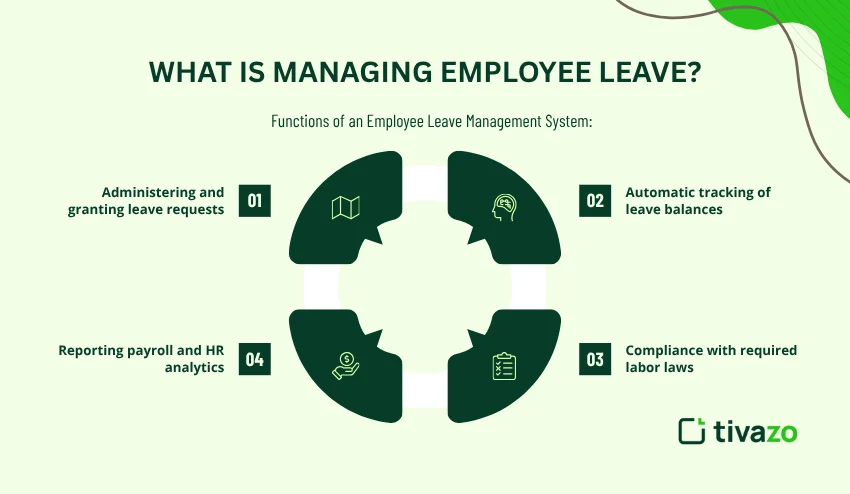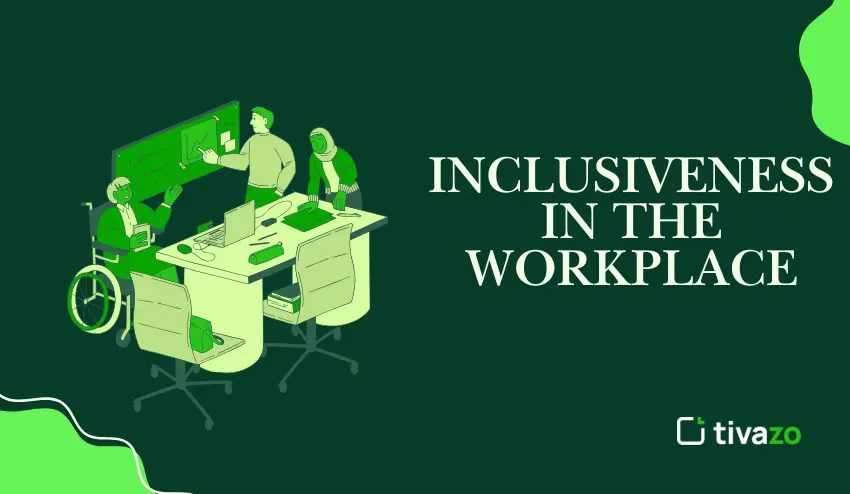Effectively managing employee time off is one of the keys to a productive workplace. A well-organized employee leave management system promotes fairness to minimize conflicts, transparency, and a healthy work-life balance for employees. Having an effective leave management strategy to boost productivity and employee satisfaction is vital, whether you are a growing startup or a body of employees with an extensive leave calendar.
At the same time, leave management planning assists organizations in better utilizing resources and avoiding project disruption due to unexpected leave. Leave management practices also lessen the administrative burden on the HR team by effectively automating leave tracking and approval. When employee requests for time-off are addressed fairly and effectively, employees feel valued and motivated, which greatly contributes to reduced turnover and nurturing a positive company culture. In the context of the current competitive business environment, a strong employee leave management system is no longer just a nice option; it is a strategy to align employee well-being with organizational success.
What is Managing Employee Leave?
Managing employee leave is the management of the employee’s absence a vacation, sick leave, holiday, maternity/paternity request, and any other request for time off in an orderly and transparent manner.
A well-structured employee leave system allows HR teams and managers to responsibly track submitted leave requests, ensure company policy compliance, and manage employee availability in the workforce.
Functions of an Employee Leave Management System:
- Administering and granting leave requests
- Automatic tracking of leave balances
- Compliance with required labor laws
- Reporting payroll and HR analytics

The Importance of Leave Management: Benefits
Good management of employee leave management brings benefits that extend beyond just assessing attendance and leaves.
This is why:
| Benefit | Description |
| Fairness and Transparency | All employees know how leave requests will be calculated and approved. |
| Greater Productivity | A functioning leave management system negates overlapping absences and workloads. |
| Compliance and Accuracy | Leave management systems minimize errors and improve compliance with labor laws. |
| Data-Driven Insights | Provides real-time data for HR to include in their decision-making. |
| Increased Employee Morale | Employees feel supported and trust the leave management when they have transparent systems. |
When employers do not manage employee leave, the result is often burnout, confusion, and payroll errors. Conversely, the presence of a leave management motivates employees, reduces turnover, and promotes productivity.
A system that factors in employee leave management adequately allows managers to have foresight when planning function and project efficiency, and guarantees that the important workload will be handled on-task when employees are on leave. Also, a leave management system can assist HR in assessing absenteeism trends and proactively plan and intervene for employee wellness.
Finally, creating a structured leave management approach will alleviate misunderstandings of reflected emails, create clarity and communication across staff, as well as diminish group meanings around mental, physical, and social leave management, and ultimately create healthy leave management cultures of respect, encouraging employee engagement, and ultimately running effective operations. Ultimately, leave management is central to modern HR management.
What Should a Manager Say When an Employee Leaves?
It’s important for managers to remain professional and respectful when someone leaves the organization.
Things for managers to think about:
- Be appreciative of their service.
- Show support during the transition.
- Solicit feedback for workplace enhancements.
- Remain cordial for future re-hire or referrals.
Example:
“Thank you very much for your hard work and dedication. We appreciate everything that you have contributed and wish you success on your next adventure.”
Even though it is more than the day…
Summary of Employee Leave Categories
With clarity around the types of employee leave management, organizations can establish an equitable and effective policy for the administration of employee leave.
| Leave Category | Purpose | Typical Duration |
| Sick Leave | For sickness or medical emergencies | 3 – 10 days a year |
| Casual Leave | To attend to short personal needs. | 1 – 3 days at a time |
| Earned/Annual Leave | For scheduled vacations | 12 – 30 days a year |
| Maternity/Paternity | Leave for birth and post-birth care | 3 – 6 months |
| Unpaid Leave | For long-duration leave beyond paid leave limits | Flexible |
| Bereavement Leave | For the death of a family member | 3 – 5 days. |
Having these firmly established in your employee leave management system will ensure transparency and equity in all departments.
How to Effectively Manage Employee Time Off
Effective employee time off management entails balancing employee needs with the needs of the business. Here are ways organizations can do it effectively:
1. Centralize the Leave Management Process: Use a centralized employee leave management process, in which all requests or approvals are tracked online.
2. Develop Clear Leave Policies: Develop clear leave policies, including eligibility, timelines for approval, and carry-forward policy.
3. Automate Approvals: Automated processes quicken approvals for leave and alleviate the workload of HR for tracking time off.
4. Maintain real-time visibility: Utilize dashboards to show who is out on leave and consider team calendars to manage projects and cover sick leave.
5. Continually Communicate with Teams: Make sure employees understand the employee leave management platform of your choice and use it efficiently.

Vacations leave management issues
While it is important, employee leave management can come with several challenges:
Human Errors: Tracking requests and leave days on paper has some human errors and leads to incorrect leave balances.
Ambiguous Policies: Unclear policies can be frustrating for employees and contribute to friction between employees and employers.
Unauthorized Absences: Unexpected absences can disrupt productivity and interfere with project deadlines.
Compliance Issues: Not adhering to labor laws may lead to fines and legal issues.
Vacation Overlap: With the time and process to seek approval for time off, unapproved vacations overlap with other coworkers’ requests, leaving reduced staffing units that may miss departmental deadlines.
Even more so, managing employee leave management without a system has been found to drop employee morale as staff members feel like their requests are not being taken seriously, following the guidelines of the organization, or being managed equally. Additionally, key aspects of an HR team spend significant time manually tracking employee requests and approvals, leave requests, and employee balances, which ultimately does not leave the HR team time for strategic programming.
Creating an Effective Leave Management Policy
A clear and well-defined employee leave management policy provides a foundation for fairness and efficiency.
Important Steps:
- Understand Legal Requirements: Research basic labor laws relevant in your area.
- Define Leave Types: Explain paid and unpaid leave types.
- Set Approval Workflows: Determine who approves what leave type.
- Determine Carry-Forward Rules: Implement rules for unused leave.
- Connect with Payroll: Ensure that leave balances and overspend affect pay.
- Share with Employees: Communicate your policy through company handbooks or HR websites.
Organizations struggle to keep accurate records of leave requests for audits and the payroll process, increasing the risk of employee disputes and payroll errors. An automated employee leave management system can help alleviate all of the above concerns across the organization while promoting fairness, openness, and efficiency for staff requests and management considerations.
Sample policy structure:
| Policy Element | Description |
| Eligibility | All full-time employees after three months of employment |
| Leave Request Process | Submit on the employee portal no later than 3 days before leave |
| Unused Leave | Carry over up to 10 unused leave days |
| Leave Approval | Supervisor and HR manager |
Such transparency in policy ensures employees feel appreciated and decreases conflicts.

Benefits of Automated Leave Management Systems
An automated employee leave management system shifts outdated HR processes to automated digital experiences and workflows.
Benefits of Automation:
- Instant Leave Request: The Employee can request a leave of absence in seconds.
- Real-time Leave Balances: Remaining leave is automatically calculated.
- Policy Adherence: The system enforces the policies.
- Error-Free Payroll: Complete integration ensures accuracy.
- Analytics and Reporting: Trends of absenteeism and use can be tracked.
Automated employee leave management improves compliance, reduces stress, and increases employee trust while economizing valuable time while being in a certain system.
What Is The Most Effective Leave Management System?
The definition of a “best” leave employee management system can vary from your organization depending on its size, structure, and budget, but the following features should be considered:
| Feature | Why It Matters |
| Cloud-Based Access | Allows for access wherever you are. |
| Customization | Allows you to customize leave types and policies. |
| Integration | Allows connection with payroll, attendance tools, and other HR systems. |
| Employee Self-Service | To help reduce the burden on HR. |
| Analytics Dashboard | Provides management-level insight. |
There are many tools on the marketplace, such as Tivazo, BambooHR, Zoho People, and Namely, most also provide sophisticated automation and live tracking services. Uplifting the employee leave management system.

Conclusion
Careful and efficient employee leave management no longer lies in the “nice to have” category; it is a “must-have”. When organizations follow transparent leave policies and utilize thought-out automated systems, they foster trust with employees, stimulate performance, and instigate positive workplace culture for all employees.
Summarily, the employee leave management framework empowers HR teams and employees to have clear visibility on what leave is being taken, it helps reduce administrative burden and lower organizational risk by improving compliance.
Creating an entirely digital, automated leave management system will be the secret to forging a sustainable path between employee wellness and organizational objectives.




